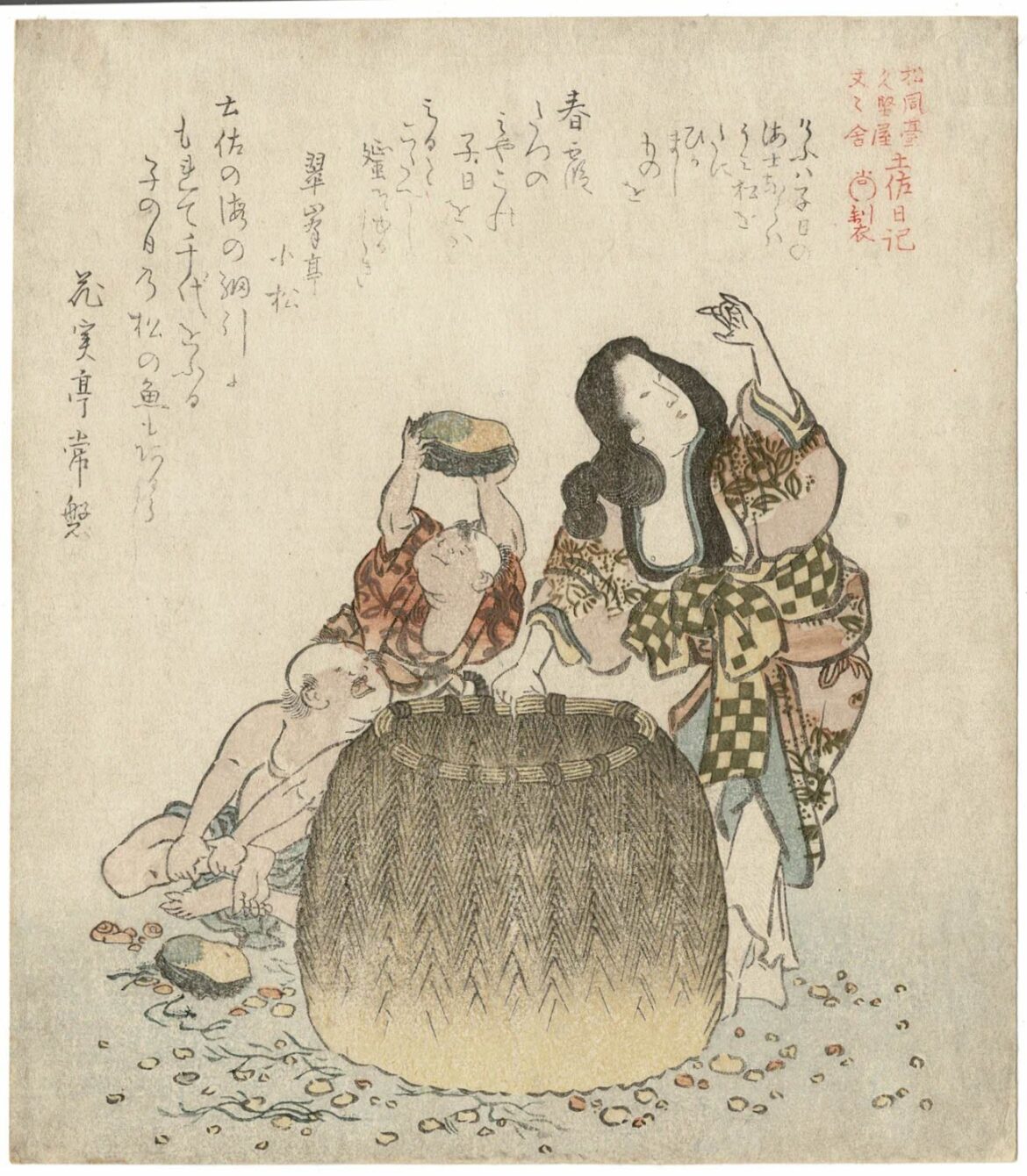Surimono in Japanese Art: Exploring the World of Privately Commissioned Prints for the Kabuki Theatre
Introduction:
In the rich tapestry of Japanese art, Surimono stands out as a unique and captivating medium. These privately commissioned prints were created specifically for distribution among a select group of patrons, often in celebration of special occasions. Surimono prints are not only known for their exceptional craftsmanship and beauty but also for their close association with the illustrious world of Kabuki theatre. In this article, we delve into the enchanting world of Surimono, exploring their historical significance and the role they played in the vibrant Kabuki culture of Japan.
Understanding Surimono:
Surimono, meaning “printed thing” in Japanese, refers to elaborately designed and meticulously crafted prints produced using a combination of woodblock printing, poetry, and vibrant pigments. Although similar to ukiyo-e prints, Surimono prints possess a distinguished exclusivity due to their limited edition and personal nature. They were primarily created for a specific circle of intellectuals, scholars, and performers who commissioned these works as luxurious gifts or tokens of appreciation.
The Kabuki Connection:
Kabuki, the traditional form of Japanese theater, captivated audiences with its elaborate costumes, dramatic gestures, and captivating performances. Surimono prints became an integral part of the Kabuki culture, as they were commissioned to celebrate actors, theatrical productions, and memorable performances. These prints served as invitations or announcements for upcoming Kabuki plays and events.
Themes and Techniques in Surimono Prints:
Surimono prints often depicted actors adorned with intricate costumes and dramatic makeup, capturing the essence of their theatrical characters. The prints showcased the performers in dynamic poses, exuding both elegance and power. The limited edition prints allowed the artist to experiment with various techniques, including the lavish use of metallic pigments, embossing, and multiple impressions to create a tactile and visually stunning effect.
The Poetry Connection:
One of the defining features of Surimono prints is their close association with poetry. The prints often involved collaborations between artists and renowned poets, resulting in a synergistic blend of visual and literary art. Poems were meticulously inscribed on the prints, enhancing their aesthetic appeal and providing deep insights into the context and emotions depicted in the artwork. The combination of poetry and visual art made Surimono prints a multisensory experience for the discerning connoisseurs and contributors.
Collecting Surimono Prints:
Due to their limited availability and exceptional quality, Surimono prints are highly sought after by collectors worldwide. These prints were often exchanged as precious gifts among the upper echelons of society, reflecting the recipient’s refined taste and deep appreciation for the arts. To this day, Surimono prints continue to hold a significant presence in prestigious museum collections and private galleries.
Legacy and Influence:
Surimono prints have had a lasting impact not only on the world of Kabuki theater but also on the broader realm of Japanese art. Their exceptional craftsmanship, use of color, and attention to detail have influenced subsequent generations of artists and printmakers. With their fusion of poetry and visual art, Surimono prints paved the way for the development of new and unique art forms, leaving an indelible mark on the rich cultural heritage of Japan.
Conclusion:
Surimono prints offer us a glimpse into the refined and vibrant world of Kabuki theater. With their exquisite beauty and personalized nature, these privately commissioned prints continue to captivate art enthusiasts and collectors around the world. Through the combined efforts of skilled artists, poets, and admirers, Surimono prints embody the essence of Japan’s rich artistic tradition and serve as a testament to the enduring allure of Kabuki theatre. So, let us continue to explore and appreciate the mesmerizing world of Surimono, celebrating its unique place in the realm of Japanese art.
For more information visit:
Edo Gallery
https://www.edogallery.com/
5857506146
770 Ayrault rd Box 414
Fine Japanese woodblock prints & Asian art for the discriminating collector. Collectors can view our online catalogue of original works by artists such as Hokusai, Utamaro, Hiroshige, Hasui, Haranobu, Kunisada, Yoshitoshi, Yoshida, and more. Japanese woodblock prints from the Edo period, meiji restoration to contemporary shin hanga and sosaku hanga. We specialize in rare, esoteric, and fine condition prints. We guarantee the authenticity of every print we sell for life.

